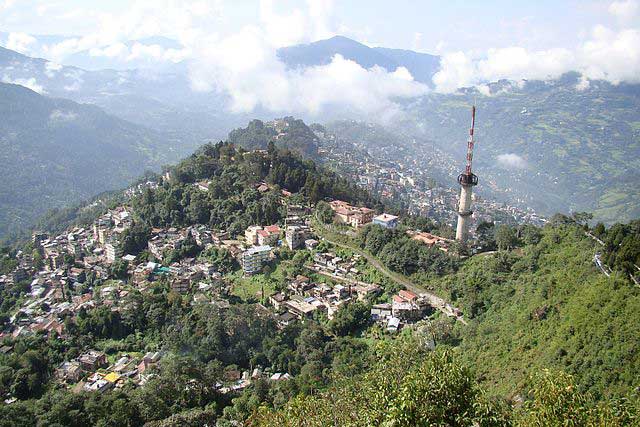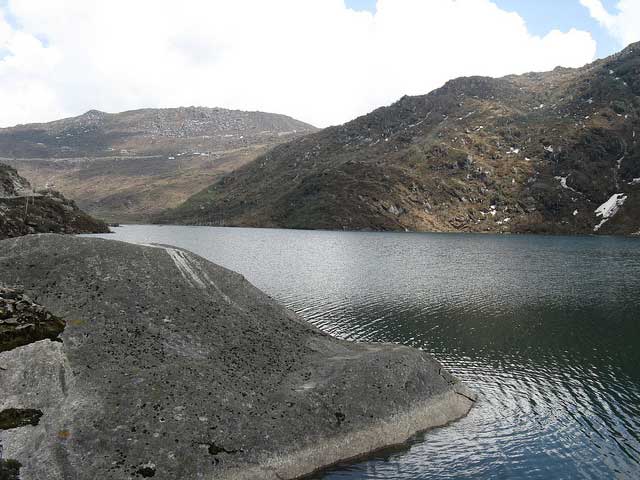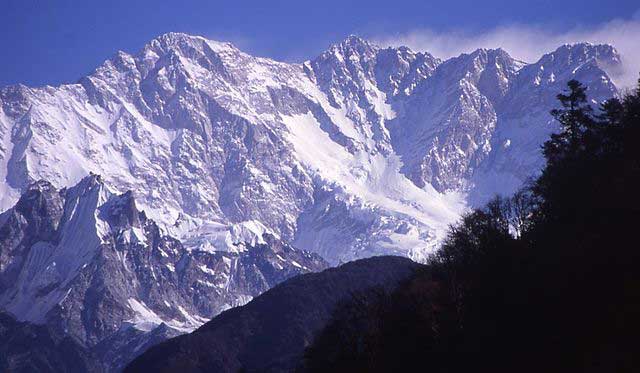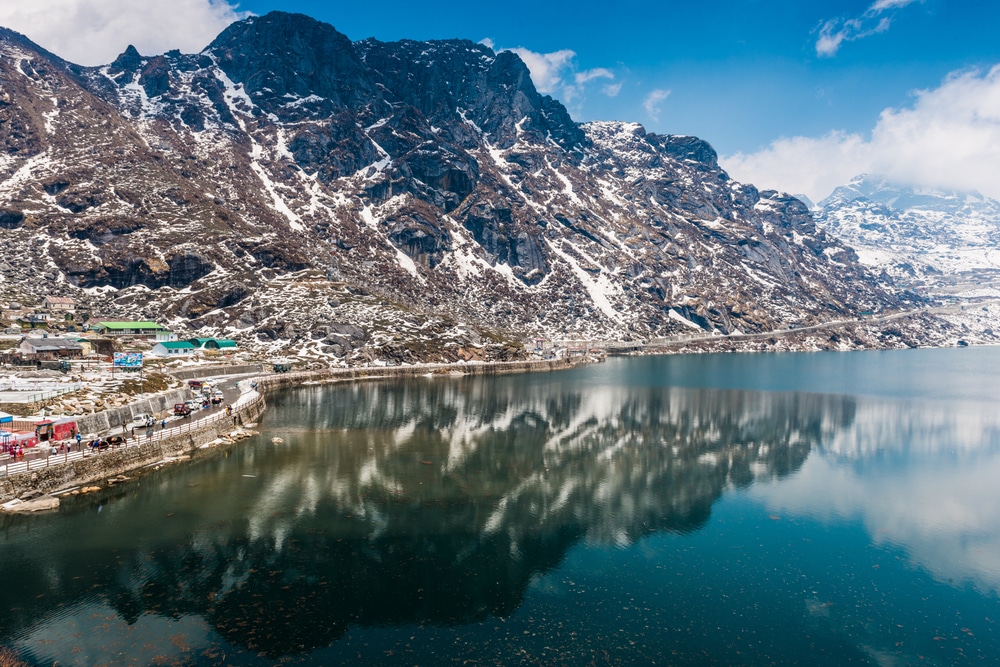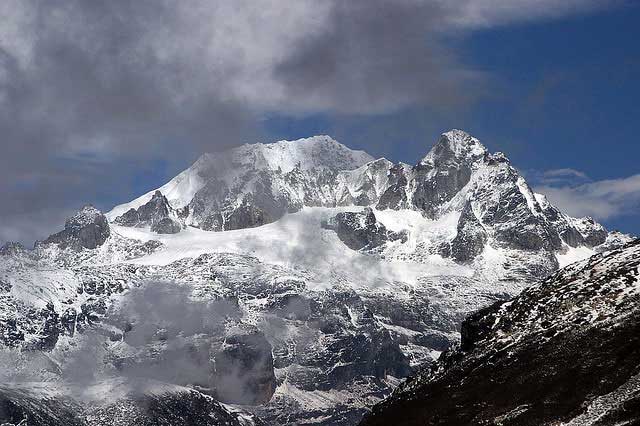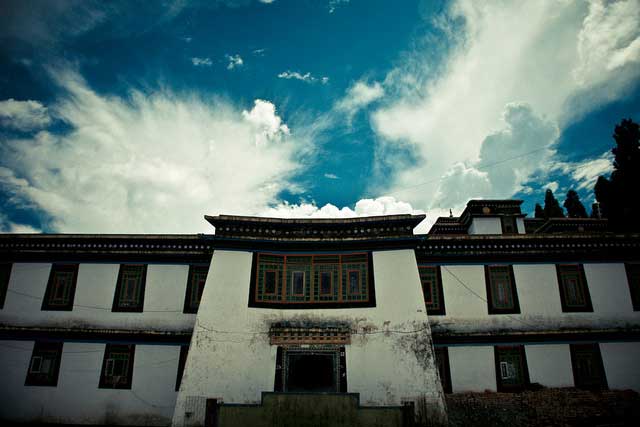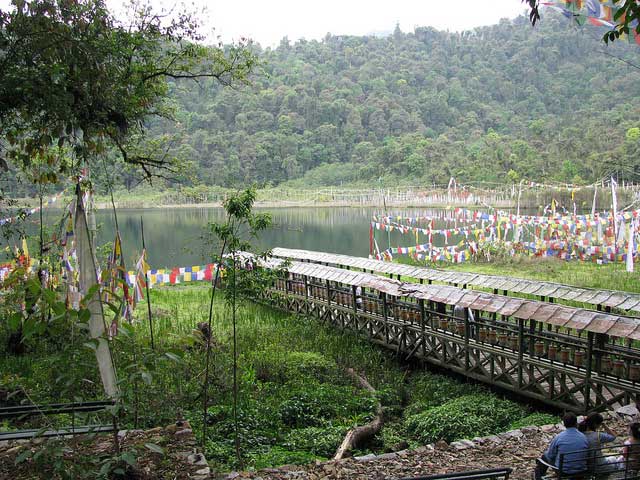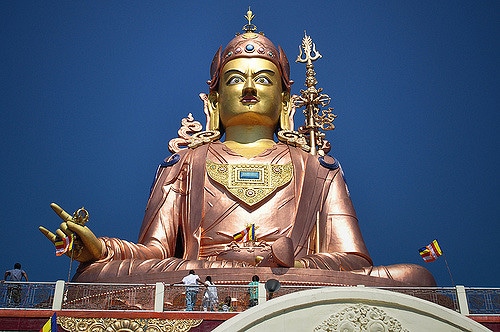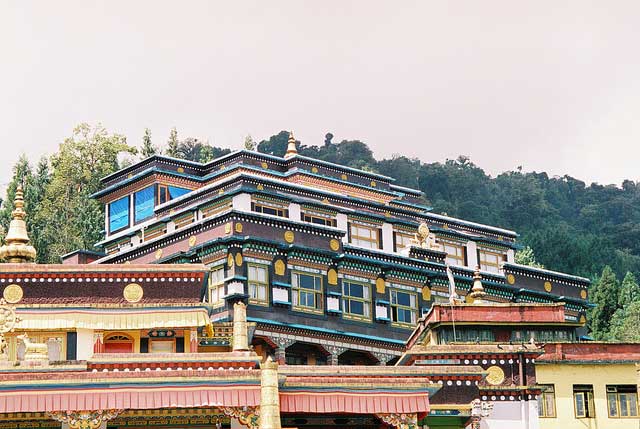Ganesh Tok is a temple, which is dedicated to the lord Ganesh. This small temple can accommodate only few persons at a time. To enter the temple you need to go down on all fours. Size notwithstanding, the temple is a favorite tourist spot visited by travelers with much enthusiasm. Devotees plant saplings on the ground near the temple on behalf of those they love.
Sikkim
Saramsa Garden, Gangtok
Located nearly 14 kms away from Gangtok, Saramsa Garden is a treat to your senses. It is also called as Ipecac Garden. The garden was established by the Forest Department of the government of Sikkim in the year 1922. The purpose behind setting up of the garden was to cater to the needs of the British officers as well as the former Namgyal Royal family.
Tsomgo Lake, Gangtok
Tsomgo Lake, which the local population consider sacred, is located at 12400 feet altitude. It is 40 kms from Gangtok. It ranks amongst the most picturesque landscapes in the state of Sikkim. The snow that melts from the surrounding mountains is the source of water for the lake. Tsomgo means ‘source of the lake’ in Bhutia language. The lake is also called Changu Lake. Oval in shape, the lake is 1 km long and 15 meters deep. On the lakeside, you will find a small temple dedicated to Lord Shiva.
Khangchendzonga Biosphere Reserve, Gangtok
You would naturally want to visit the 28169 feet tall Khangchendzonga, which ranks third amongst the tallest peaks in the world. Khangchendzonga refers to ‘five treasures of snow’ in local dialect. Several peaks and glaciers surround this reserve. The national park that carries the name of the peak is rich in flora and fauna. Khangchendzonga National Park is a huge park covering an area of 1784 sq.km with many spectacular sights to offer. This high altitude park is amongst the highest biosphere reserves all over the world; and most parts of it are inaccessible too. The park covers various major places and its three major entry points are Yuksom in the west of Sikkim, Lachen and Dzongu in Sikkim’s north.
10 Places To Visit In Sikkim
Sikkim is an Indian state located near the Himalayas. With a population of only 6, 13,000 inhabitants (census 2012), is the least populated state in India and the 2nd smallest state after Goa. Due to its unique location near the Himalayas, Sikkim is geographical diverse and the climate ranges between sub-tropical and high-alpine. The state boasts of its various cultural and natural resources and also has the only open land border between India and China. Sikkim is rich in cultural heritage and houses a multitude of different flora and fauna. The state is divided into 4 districts namely East Sikkim, West Sikkim, North Sikkim and South Sikkim. Due to its location near the Chinese border the place is mostly controlled by the Indian army and many areas require special permits if one wants to visit them.
Trekking at Mt. Kanchendzonga, Sikkim
With a monolithic elevation of 8,568 meters above sea level, Mt. Kanchendzonga is the world’s 3rd highest peak and the highest peak in India. Located on the boundary between Sikkim and Nepal, the mountain is a trekker’s haven and is considered to be one of the most challenging trek spots.
Phodong Monastery, Sikkim
Along with the 2 other monasteries that belong to the Kagyu sect of Tibetan Buddhism, Phodong monastery was founded by the 9th karmapa in the 18th century. However, the monastery was rebuilt in the 20th century, although the old mural paintings and frescoes were preserved.
Khecheopalri Lake, Sikkim
Located at an average elevation of 1,700 meters above sea level, Khecheopalri Lake is a sacred place for both Buddhists and Hindus and is situated in the Khecheopalri village in the west Sikkim district. The name of the lake ‘Khecheopalri’ was originally known as ‘Kha-chot-palri’ which means the heaven of Lord Padmasambhava. An interesting feature of the lake is that leaves are not allowed to float on the lake, which is ensured by the birds which industriously pick them up as soon as they drop into the lake surface.
Namchi, Sikkim
The capital of south Sikkim district, Namchi is located at an average elevation of 1315 meters above sea level. The area is fast growing into a tourist destination with its enormous potential for all round tourist activities. The Namchi monastery, Ralong monastery and Tendong Hill are imaportant Buddhist pilgrimage centres. The world’s largest statue (at 118 feet) of the Buddhist Padmasambhava, also known as Guru Rinpoche, the patron saint of Sikkim, is on the Samdruptse hill (The Wish Fulfilling well) opposite Namchi and is a must visit.
Rumtek Monastery, Sikkim
This Tibetan Buddhist monastery was built in the 16th century around the same time as the other 2 monasteries established by the 9th Karmapa Wangchuk Dorje and was the main seat of the Karma Kagyu lineage for some time and was eventually abandoned to ruins. When the 16th Karmapa arrived in Sikkim in 1959, he decided to rebuild the monastery as the site was considered highly auspicious.

